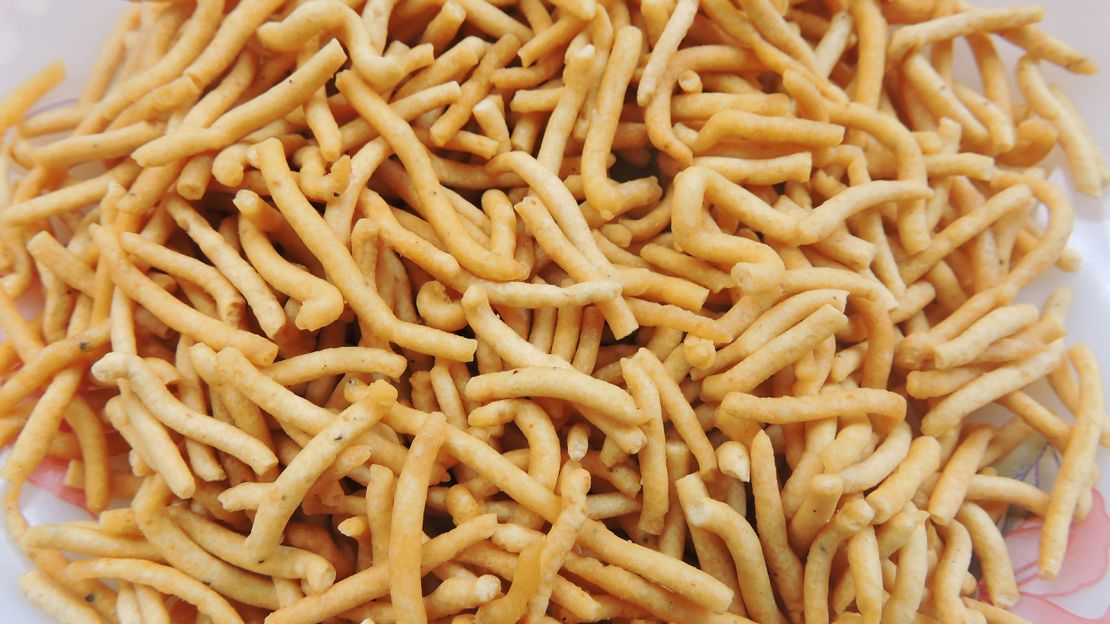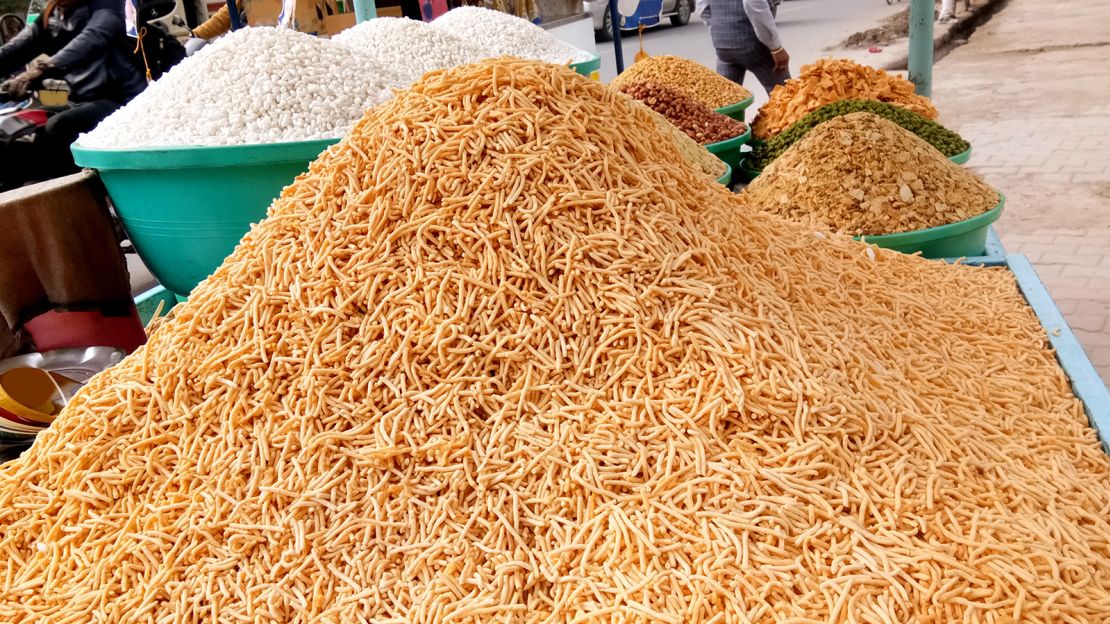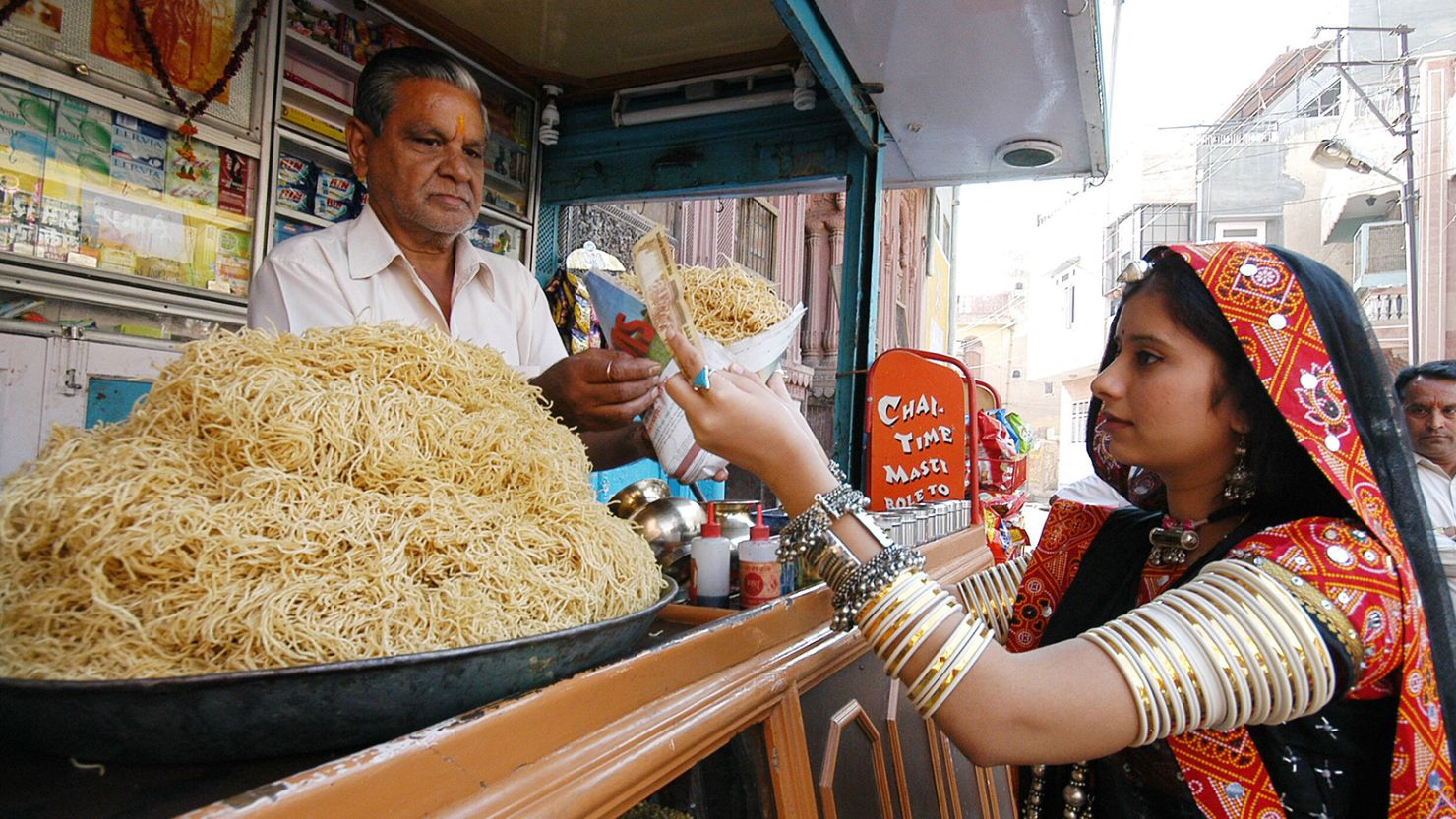Indian poet Ashok Vajpeyi called Bikaner “a city where one half of the population is occupied with making bhujia and the other half eating it.”
Anyone visiting this far-flung destination in northwest India’s frontier state of Rajasthan might agree. The golden and crispy fried snack, shaped like noodles, is served everywhere from tiny roadside tea stalls to high-end cocktail bars.
It finds its way onto every course – as toppings on breakfast and on lunch and dinner time curries. Why? Because it’s delicious – made with a local bean known as moth or gram flour seasoned with traditional spices. Another popular variant, aloo bhajia, is made with potatoes.
Bikaner isn’t lacking in flavor itself. A place of shifting dunes, camels and ancient forts built by warrior kings, just 150 kilometers (93 miles) from the Pakistan border, it’s a quintessential desert landscape.
Locals refer to themselves as being saral, sukh, and sust (simple, happy, lazy). Simple and happy, perhaps, but the bhujia makers here are far from lazy – they start work at 4 a.m. most days in order to collectively produce more than 250 tons before clocking off.

A delicious history
It’s an obsession nearly 150 years in the making.
The story goes that in 1877, Bikaner state monarch Maharaja Shri Dungar Singh commissioned a novel savory item to treat guests at his palace – and the royal chefs came up with bhujia.
Little did Singh know that what emerged from his kitchen would become an edible Indian national treasure.
News of bhujia spread fast and soon it was being made in homes around the state. In 1946, one enterprising local, Ganga Bishan Agarwal, began selling the snack from a humble shop in a Bikaner backstreet.
A decade later, Agarwal left town to create his own sweet empire, which proved so successful that several curious businessmen from farther afield were prompted to trace his origins and discovered the magic of bhujia.

Today most bhujia-producing businesses have their roots back in Bikaner. But that does not mean that you can set up a wok and churn out bhujia anywhere and call it ”Bikaneri.”
For many fans, only bhujia made in Bikaner counts as the “real thing.”
In 2010, the Bikaneri bhujia was issued a coveted Geographical Indication tag by the Indian government. Now only those manufacturing inside the geographic territory of Bikaner are allowed to use the adjective ”Bikaneri” to label their bhujia – just like only one region of France can call its sparkling wine Champagne.
Despite it’s fame, Bikaneri bhujia remains a cottage industry in Bikaner – albeing one that provides employment to around 2.5 million people, especially women, in the region’s villages.
From a local favorite to a global brand
But what makes Bikaner’s snacks so special?
“The magic is in the air,” claims Deepak Agarwal, a descendant of the Ganga Bishan family who is a giant of today’s Bikaneri bhujia scene, selling the delicacy under the popular Bikaji brand name.
“While the rest of our family took over different geographical regions of India, my father decided to settle here and started his venture,” he says.
“You cannot get the same flavor even if you export the ingredients from here to manufacture it elsewhere.”
An arid climate, a distinctive red chili known as longi mirch, which blends well with local spices, and the region’s saline water are also key ingredients, he says.

For Dr. Chef Saurabh, a culinary author and educator, “Bikaneri bhujia is not a food, but an emotion.”
“There is a distinction in the taste of any food when it is sourced from its origin, and bhujia from Bikaner is a perfect example,” he says.
And now bhujia is attracting global attention.
In 2019, international food giant Kellogg’s contemplated buying a stake in best-selling Bikaner bhujia-maker Haldiram Snacks, although the deal was subsequently scrapped.
PepsiCo attempted to launch its own bhujia product in 1996. The masala-spiced product, which it called Lehar, couldn’t compete with Bikaneri classics and eventually vanished from store shelves.
A snack that travels
Meanwhile, a world away from Bikaner, bhujia from one of the brands owned by Ganga Bishan’s family can even be found on the shelves of a New Jersey Walmart – to the delight of Rajasthan emigrant Aartee Sodhani,
“We have a large population of Indians here,” she says. “Besides Walmart and Indian stores, it is even available on Amazon.com. I sometimes add it on a burger or a sandwich to quirk up my kid’s food. It provides some ‘Indianness’ to the foreign foods.”
For Sodhani and other Indians abroad, bhujia serves as an anchor from history to the ever-changing culinary scene of Indians no matter where they are on the planet.
And Ganga Bishan’s success story is just one of many. Today Maharaja Singh might be resting proudly in his grave knowing that Bikaner has produced bhujia barons who have made their presence felt way beyond the desert alleyways of a small town in northwestern India.
Top image: A woman buys bhujia from a street stall in Bikaner (Purushottam Diwakar/The The India Today Group/Getty Image)



